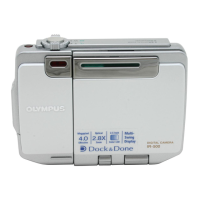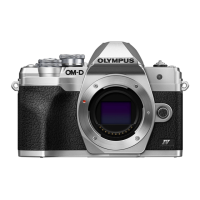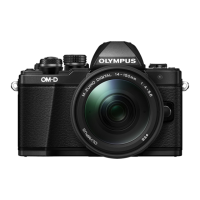
Do you have a question about the Olympus iZoom 75 and is the answer not in the manual?
| Brand | Olympus |
|---|---|
| Model | iZoom 75 |
| Category | Digital Camera |
| Language | English |
KEEP THE BATTERIES AWAY FROM FIRE. NEVER TRY TO DISASSEMBLE, RECHARGE, OR SHORT-CIRCUIT BATTERIES.
NEVER ATTEMPT TO DISASSEMBLE THE CAMERA; IT CONTAINS A HIGH-VOLTAGE CIRCUIT.
Steps to open the compartment and insert a new battery.
Correct procedure for inserting a new battery.
Opening the lens barrier and checking the 'E' indicator.
Procedure for opening the film cartridge compartment.
Correctly loading the cartridge and closing the cover.
Ensuring the 'E' symbol indicates an unexposed cartridge.
Opening the lens barrier to extend the lens and turn on the camera.
Positioning the camera and using the zoom lever for composition.
Aligning the autofocus mark with the subject for focus.
Fully pressing the shutter release to take the photograph.
Half-pressing the shutter to achieve focus and set exposure.
Procedure for automatic film rewinding at the end of the roll.
How to manually rewind the film before the roll is finished.
Guide to choosing flash modes based on shooting conditions.
Procedure to enter Spot Mode by pressing multiple buttons.
How to position the autofocus mark and lock focus.
Repositioning the subject to adjust exposure while maintaining focus.
Steps to engage the selftimer for delayed shutter release.
Aiming and pressing the shutter release for a delayed shot.
Procedure to enable the remote control function.
How to aim and use the remote control to trigger the shutter.
Understanding the camera's splash-resistant design and limitations.
Common causes and solutions for a non-functional camera.
Troubleshooting further operating issues like LCD behavior.
Diagnosing why the remote control shutter may not be releasing.
Troubleshooting issues with the flash not firing or recharging.
Addressing blurry images caused by camera shake during exposure.











